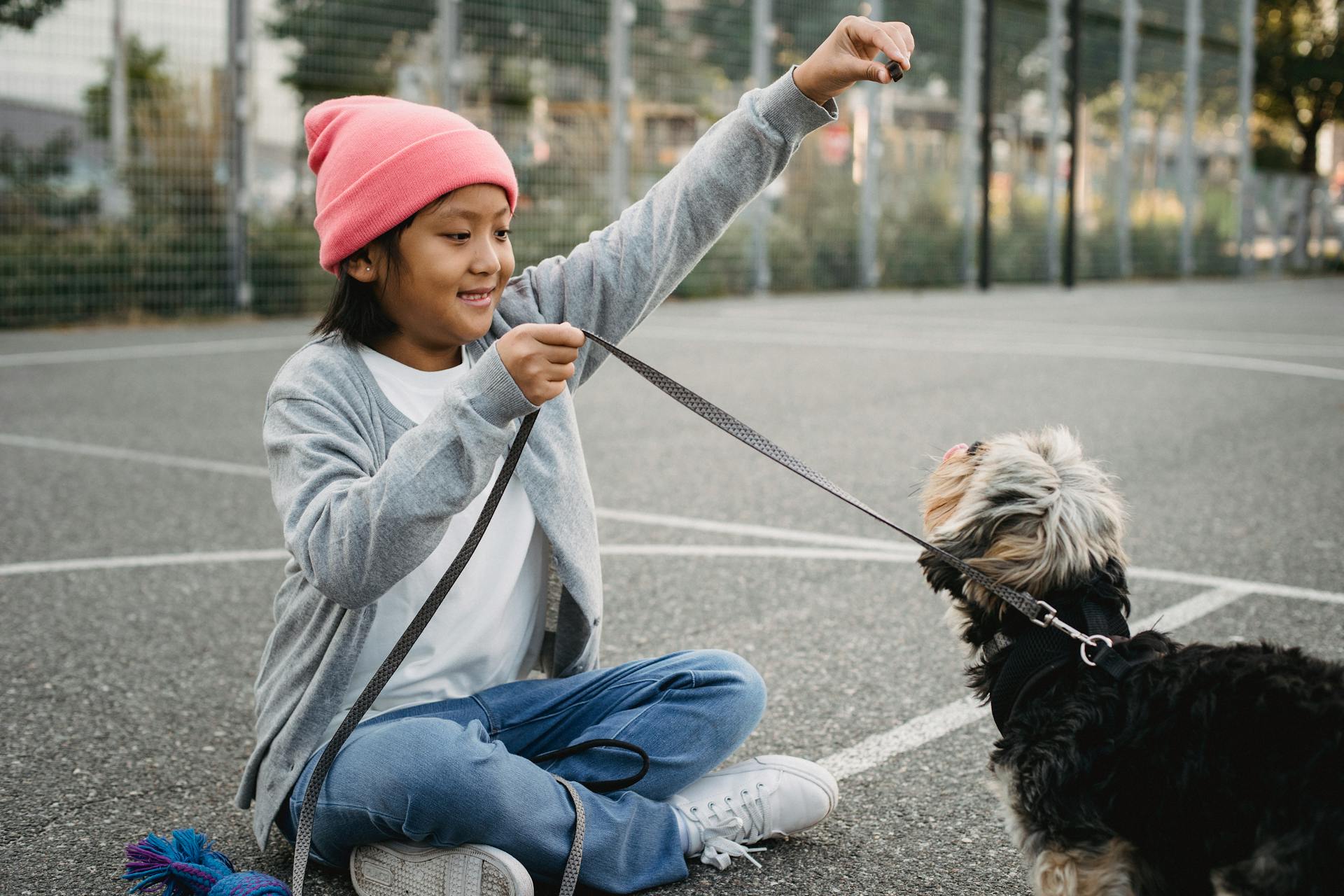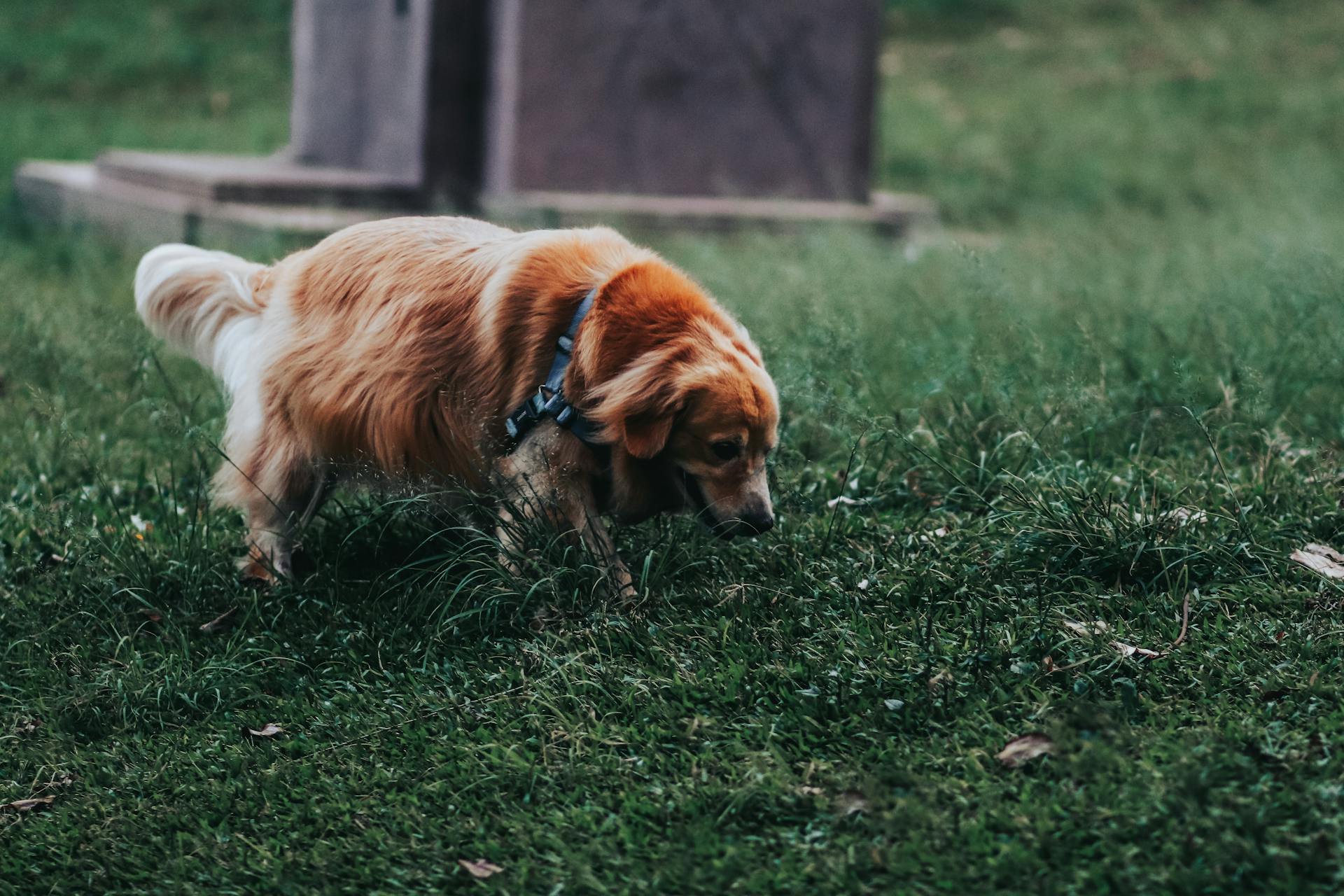
Behavior modification dog training is a game-changer for any dog owner looking to strengthen their bond with their furry friend. By focusing on positive reinforcement techniques, you can help your dog overcome unwanted behaviors and develop good habits.
With behavior modification dog training, you can reduce the frequency and severity of problem behaviors like barking, chewing, and digging. This means less stress and frustration for you, and a happier, healthier dog.
By understanding the underlying causes of your dog's behavior, you can address the root issue rather than just treating the symptoms. For example, if your dog is barking excessively, it may be due to anxiety or boredom, which can be addressed through training and enrichment activities.
With consistent training and patience, you can see significant improvements in your dog's behavior and your relationship with them.
Understand Your Dog
Understanding your dog's behavior is crucial for effective behavior modification training. It's essential to identify and avoid aggression triggers to prevent your dog's aggression.
Dogs can become agitated by various stimuli, including other animals, people, or even certain environments. To prevent this, take your dog for walks in areas with few other people or dogs.
You can also try to block your dog's view of potential triggers, such as other dogs, to reduce their stress. Maintaining a safe distance between your dog and potential triggers is also vital.
Keeping a journal of your dog's aggressive behavior can help you identify patterns and develop a solution. Record the stimulus or trigger, time of day, weather conditions, and how you responded to the situation.
Here's a list of things to keep track of in your journal:
- The stimulus or trigger
- The time of day
- The weather conditions when they showed aggression
- The antecedents (events preceding the exhibition of aggression)
- The consequences (how you responded to the situation)
Learning your dog's body language is also essential for understanding their behavior. Dogs communicate non-verbally, and it's common for pet parents to overlook these cues.
Some common signs of stress in dogs include:
- Angling their bodies away
- Nose licking or yawning
- Retreating
- Directing their focus away from you
- Growling
- Baring teeth
- Charging or lunging
- Snapping
- Harsh barking
- Biting
If you notice any of these behaviors, give your dog space to cool off.
Behavior Modification Techniques
Behavior modification techniques are essential for changing a dog's emotional response to triggers. These techniques include desensitization, habituation, and behavior adjustment training (BAT), which can be applied by professional dog trainers.
Desensitization involves gradually making a dog less sensitive to triggers that cause negative reactions, taking place in several small steps. Habituation is the process of repeated exposure to a particular stimulus, which results in the dog's response decreasing or ending. This can be a powerful way to address triggers that cause aggression.
To effectively use these techniques, it's crucial to understand your dog's triggers and identify what causes their aggression. By keeping a journal of their aggressive behavior, you can track patterns and develop a solution. Document the stimulus or trigger, time of day, weather conditions, antecedents, and consequences to gain valuable insights.
Here's a summary of the key techniques:
Modification for Dogs
Behavior modification for dogs is a specialized training approach designed for dogs with severe aggression, fear, or anxiety. This training method involves correcting unwanted behaviors, redirecting to desired behaviors, and reinforcing the new behaviors.
Dogs with aggression issues from dominant traits need clear, concise rules to follow and correction and redirection when they're not followed. On the other hand, dogs with severe anxiety or fear need confidence building and to learn new coping skills.
Trainers specializing in behavior modification for dogs use tools and techniques specifically designed for anxious, fearful, and aggressive dogs. They establish boundaries and teach the dog clear rules that limit and eventually eliminate the dog's previous negative behavior pattern.
Desensitization is a technique that involves several small steps which gradually make a dog less sensitive to triggers that are known to cause negative reactions. Habituation is another technique that involves repeated exposure to a particular stimulus, which results in the ending or decrease of the dog's response to it.
To prevent your dog's aggression, it's essential to identify and avoid aggression triggers. For example, if your pet becomes agitated when he sees other animals, take him for walks in areas where there are few other people walking dogs or during times when there are few people in dog parks.
Documenting your dog's behavior is also crucial in determining patterns in their aggressive behavior and developing a solution. Keep track of the stimulus or trigger, time of day, weather conditions, antecedents, and consequences.
Common causes of behavioral issues in dogs include fear, anxiety, stress, improper training, trauma, bad habits, abuse, medical or physical issues, and lack of proper socialization with other dogs or humans.
Readers also liked: Fear Free Dog Training
Punishing Your Dog
Punishing your dog is not an effective way to modify their behavior. Most aggressive dog behavior is caused by anxiety and fear, not a desire to be the alpha.
Punishments like alpha rolls, e-collars, prong collars, leash pops, and leash corrections can actually make the situation worse. Scolding and yelling are also ineffective and can hurt your relationship with your dog.
Using punishments can exacerbate the situation and make your dog even more afraid. This approach can be counterproductive and create more problems than it solves.
Instead, focus on boosting your dog's confidence and making them feel safe.
Related reading: Can a Female Dog Be Alpha
Training Methods
If your dog displays fear, anxiety, aggression, or dangerous behavior, you need to consult a professional dog trainer. They will provide training and corrections to establish new rules and behaviors.
An experienced dog trainer can help establish new rules and behaviors in your dog. This is especially important if your dog's behavior is worsening and could result in someone getting injured.
At Hilton Butler, they have been providing effective, confident training and behavior modification in Dallas-Fort Worth since 2005.
Check this out: What Are the 5 Golden Rules of Dog Training
Common Issues and Solutions
Behavior modification dog training can be a complex and challenging process, but understanding the common issues and solutions can make a big difference.
Fear, anxiety, and stress are common causes of behavioral issues in dogs, which can stem from their individual experiences, home environment, and life before coming to a training program.
Improper training, trauma, bad habits, abuse, medical or physical issues, and lack of proper socialization with other dogs or humans can also contribute to behavioral issues.
Dogs with severe aggression, fear, or anxiety may display behaviors such as biting, growling, snarling, snapping, charging, or uncontrolled bladder when frightened, requiring specialized training and behavior modification.
Behavior modification training can take anywhere from 6 weeks to several months, depending on the severity of the behavioral issues, underlying causes, and the dog's age and temperament.
Recommended read: Dog Fear Aggression Training
What Causes Issues in Dogs
Behavior issues in dogs can stem from a variety of factors, including fear, anxiety, stress, improper training, trauma, bad habits, abuse, medical or physical issues, and lack of socialization.
Suggestion: Cockapoo Behavior Issues
Fear and anxiety can be a result of a dog's past experiences or environment, leading to behavioral issues that need to be addressed.
Dogs with medical or physical issues may exhibit behavioral problems due to discomfort or pain.
Improper training can also lead to behavioral issues, as dogs may not understand what is expected of them.
A lack of socialization can cause dogs to become anxious or fearful around other dogs or humans, leading to behavioral problems.
Understanding the underlying cause of a dog's behavior issues is crucial in developing an effective training plan.
By identifying the root cause of the problem, you can work with your dog to develop a customized training plan that addresses its specific needs.
For example, if your dog is fearful of other dogs, you may need to take steps to desensitize it to the presence of other dogs, such as taking it for walks in areas with few other dogs.
Desensitization and counter-conditioning techniques can be effective in helping dogs overcome their fears and anxieties.
Explore further: Cavachon Behavior Problems
Fixing My Dog's Issues
Fixing your dog's behavioral issues can be a challenging process, but it's essential to address the root causes of the problem rather than just treating the symptoms. This can take anywhere from 6 weeks to several months, depending on the severity of the issues and your dog's age, temperament, and history.
A professional dog trainer can help you identify the underlying causes of your dog's behavior and develop a customized training plan. They will also teach you how to reinforce the new behaviors consistently and firmly at home.
To prevent your dog's aggression, it's crucial to identify and avoid aggression triggers. For example, if your dog becomes agitated when seeing other animals, take him for walks in areas with few other dogs or during less busy times.
Documenting your dog's behavior can be very beneficial in determining patterns and developing a solution. Keep a journal of your dog's aggressive behavior, including the stimulus or trigger, time of day, weather conditions, antecedents, and consequences.
A unique perspective: It's Your Choice Dog Training
Neutering or spaying your dog may be a solution to aggression caused by hormones. Consult your veterinarian or a professional dog trainer to discuss the benefits and drawbacks of this option.
Here are some common aggression triggers to be aware of:
- Other animals
- Visitors in your home
- Changes in environment or routine
- Medical issues or pain
By understanding your dog's triggers and addressing the root causes of their behavior, you can help prevent aggression and create a more harmonious home for your furry friend.
Try Medications
Trying medications can be a viable option to help manage your dog's aggression. If your veterinarian suspects that anxieties and fears are the root cause of your dog's aggression, they may recommend calming medications like Prozac or Xanax to reduce stress.
However, these medications should be used in conjunction with dog training for best results. Supplements and aromatherapy are also effective natural treatments that can be used alongside medications.
Sources
- https://www.caninescholars.com/dog-training-services/behavior-modification/
- https://www.hiltonbutler.com/k-9-bootcamp/behavior-modification/
- https://www.k9aholics.com/behavior-modification/modifying-your-dogs-behavior-top-10-aggressive-dog-tips-hacks/
- https://garymaria.com/about-dog-behavior-modification/
- https://canineengineering.com/dog-training-and-behavior-modification/
Featured Images: pexels.com


